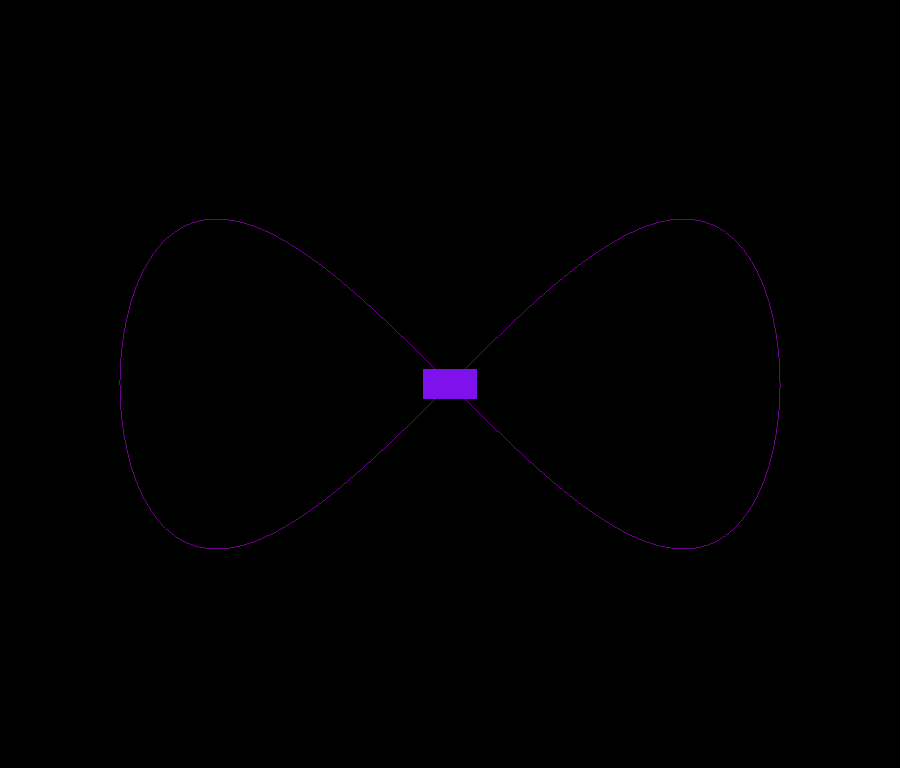Note
Go to the end to download the full example code
Keyframe animation#
Tutorial on making keyframe-based animation in FURY using custom functions.
import numpy as np
import fury
scene = fury.window.Scene()
showm = fury.window.ShowManager(
scene=scene, size=(900, 768), reset_camera=False, order_transparent=True
)
cube = fury.actor.cube(
np.array([[0, 0, 0]]), directions=(0, 0, 0), colors=(1, 0, 1), scales=6
)
Creating an Animation to animate the actor and show its motion path.
anim = fury.animation.Animation(length=2 * np.pi, loop=True, motion_path_res=200)
Adding the sphere actor to the timeline This could’ve been done during initialization.
anim.add_actor(cube)
Creating time dependent functions.
def pos_eval(t):
return np.array([np.sin(t), np.cos(t) * np.sin(t), 0]) * 15
def color_eval(t):
return (
np.array([np.sin(t), np.sin(t - 2 * np.pi / 3), np.sin(t + np.pi / 3)])
+ np.ones(3)
) / 2
def rotation_eval(t):
return np.array([np.sin(t) * 360, np.cos(t) * 360, 0])
def scale_eval(t):
return (
np.array([np.sin(t), np.sin(t - 2 * np.pi / 3), np.sin(t + np.pi / 3)])
+ np.ones(3) * 2
) / 5
Setting evaluator functions is the same as setting interpolators, but with one extra argument: is_evaluator=True since these functions does not need keyframes as input.
anim.set_position_interpolator(pos_eval, is_evaluator=True)
anim.set_rotation_interpolator(rotation_eval, is_evaluator=True)
anim.set_color_interpolator(color_eval, is_evaluator=True)
anim.set_interpolator("scale", scale_eval, is_evaluator=True)
changing camera position to observe the animation better.
scene.set_camera(position=(0, 0, 90))
Adding the animation to the show manager.
showm.add_animation(anim)
interactive = False
if interactive:
showm.start()
fury.window.record(
scene=scene, out_path="viz_keyframe_animation_evaluators.png", size=(900, 768)
)

Total running time of the script: (0 minutes 0.114 seconds)
